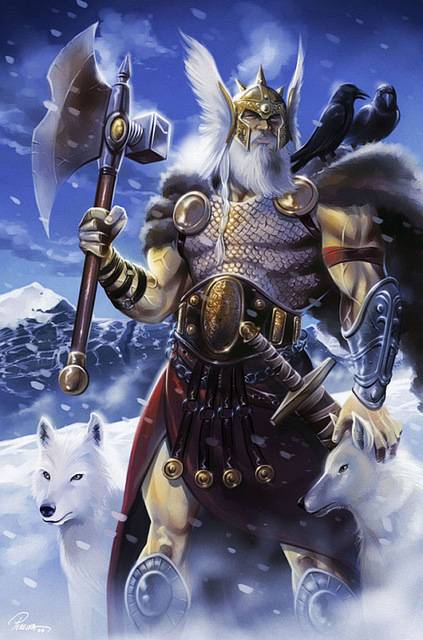History:
Odin is the supreme god of norse pantheon. He had the power to do whatever he wanted. He had power over life and death. He and his brothers created the universe, but he was the king of the gods and the most powerful of them. He was the god of necromancy, magic, wisdom, intellect, poetry, victory, war, wind, travel, shamanism, prophecy, courage, and many other things.
He took the power of some people and gave to others, he could make his enemies in battle blind, or deaf, or terrified, and their weapons so blunt that they no more than a wand. Odin could transform his shape, he could quench fire, the ocean in tempest, and the travel of wind. He lie as if asleep, but then he would be in distant lands in twinkling. He called the dead out of the earth. He taught all these arts in runes and incantations to Æsir people. Odin can also bring on the death, ill-luck, or bad health of people (Ynglinga Saga).
Name: Odin. Also Oden, Wotan, Woden, Yggr, Alföðr, Grímnir, Gautr, Hárr, Rögnir, Sigtyr and many others. Odin was referred to by over 200 names.
Symbols: The main symbol of Odin was a spear Gungnir. Odin was also noted for his one-eye, and his was followed by two ravens Hugin (Thought) & Munin (Memory), by two wolves Geri & Freki and by a horse eight-legged Sleipnir.
Area Of Control: creation, power, rage, courage, inspiration, poetry, battle, death, magic, travel, healing, necromancy, victory, wisdom, prophecy and Shamanism.
Usual Image: Odin was thought of as a tall old man with white hair and beard.
Holy Books: The Edda, as well as poems and sagas.
Holy Days: Wednesday (Odin’s Day).
Place Of Worship: Temples, forests and household altar.
Relatives: Bor (father), Bestla (mother), Frigga (wife), and many sons including Thor, Balder, Tyr.
Synodeities: Anu (Babylonian), Lug (Celtic), Ra (Egyptian), Bhrama (East Indian), Zeus/Jupiter (Greek-Roman.)

